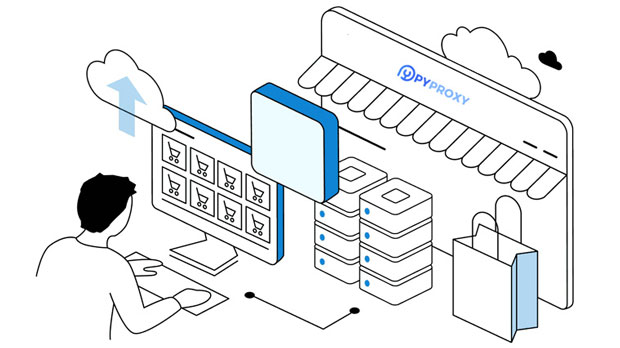In the rapidly evolving world of digital technology, the need for enhanced privacy, anonymity, and data security has driven many businesses and individuals to explore proxy browsing services. Among them, proxy browser online stands out as a popular tool to access the internet securely and without exposing sensitive information. However, the stability of proxy browsing services in wireless proxy environments remains a critical concern. This article provides an in-depth analysis of the stability of proxy browsers in wireless proxy environments, comparing their reliability, performance, and overall functionality. The insights presented here are of high value for customers who rely on these technologies for secure online operations, as well as for businesses seeking to adopt the best tools for internet browsing in diverse conditions. Introduction to Proxy Browsing and Wireless Proxy EnvironmentsProxy browsers act as intermediaries between users and the websites they visit. In a wireless proxy environment, these tools allow users to access online content while masking their real IP addresses. This helps ensure privacy, security, and anonymity, which are essential in preventing unauthorized tracking, identity theft, and cyberattacks.Wireless proxy environments refer to scenarios where proxies are used over wireless networks such as Wi-Fi or cellular data connections. These environments often come with specific challenges, including network instability, data congestion, and fluctuating connection speeds, all of which can impact the stability and performance of proxy browsers.For businesses that depend on proxy browsers for secure browsing or geo-restricted access, understanding how these services perform in such environments is crucial for making informed decisions about their technology stack. This article will evaluate the key factors that determine the stability of proxy browsers in wireless proxy environments, and provide recommendations based on the findings.Key Factors Affecting Proxy Browser Stability in Wireless NetworksSeveral factors can influence the stability of proxy browsers when used in wireless proxy environments. These include network speed, connection reliability, proxy server load, and the underlying infrastructure of both the proxy service and the wireless network.1. Network Speed and Latency Wireless networks often experience fluctuations in speed due to signal strength, interference, and network congestion. These issues can directly impact the performance of proxy browsers, causing delays in page loading times, buffering during video streaming, and general sluggishness in browsing. Latency is particularly problematic when users attempt to access content on servers located far away, as it leads to increased data transmission times.2. Connection Reliability Wireless networks tend to be less reliable compared to wired connections. Inconsistent signal strength, frequent disconnections, and interference from other wireless devices can lead to interruptions in proxy browsing. This results in poor user experience, as the browser may lose connection to the proxy server or the internet altogether. In some cases, the proxy browser might fail to reconnect automatically, leaving users with a broken browsing session.3. Proxy Server Load and Performance The stability of proxy browsers is heavily influenced by the performance and load capacity of the proxy servers themselves. In wireless environments, proxy servers may struggle to handle a high volume of traffic, especially if the wireless network is unstable. Overloaded servers can lead to slow response times, packet loss, and, in extreme cases, service outages. The quality of the proxy server’s infrastructure plays a significant role in determining how well it handles fluctuating network conditions.4. Encryption and Security Protocols The type and strength of encryption used by proxy browsers also impact their stability in wireless networks. Strong encryption protocols may offer enhanced security but can require more processing power, which can slow down browsing speeds, especially in wireless networks where bandwidth is often limited. Striking the right balance between security and speed is essential for maintaining a stable proxy browsing experience in wireless environments.Comparison of Proxy Browser Services in Wireless Proxy EnvironmentsWhen testing the stability of different proxy browsers in wireless proxy environments, it’s important to compare the performance of several services across key metrics such as speed, reliability, ease of use, and security. This section will present a comparison of various proxy browsers, focusing on their performance in wireless environments.1. Service A: High Speed and Moderate Reliability Service A is known for its fast browsing speeds in stable network conditions. However, its performance significantly drops in wireless environments, particularly during peak usage times. The proxy browser may suffer from frequent disconnections or timeouts when the network is congested or the signal strength is weak. While the service offers excellent encryption and security features, the stability issues in wireless environments make it less suitable for users who require uninterrupted browsing.2. Service B: Reliable and Secure, but Slower Speeds Service B performs well in terms of reliability and security, offering stable connections even in low-quality wireless networks. However, its speed tends to suffer, especially when accessing high-bandwidth content like videos or large files. The proxy server’s infrastructure is well-designed to handle traffic spikes, ensuring consistent performance despite network fluctuations. This service is ideal for users who prioritize reliability and security over speed.3. Service C: Optimized for Wireless Networks Service C is specifically optimized for use in wireless environments. It employs advanced algorithms to minimize latency and improve connection stability, even when the signal strength is low or the network is congested. The proxy browser also uses lightweight encryption protocols that balance security and speed. This service performs well across different wireless network types and is ideal for users who need stable and fast browsing on the go.Best Practices for Enhancing Proxy Browser Stability in Wireless Proxy EnvironmentsTo maximize the stability of proxy browsers in wireless environments, users and businesses should consider implementing the following best practices:1. Choose the Right Proxy Browser It’s essential to select a proxy browser that aligns with the specific needs of your wireless network environment. Services that prioritize speed may be more suitable for high-bandwidth tasks, while those that emphasize reliability and security are better for secure browsing in fluctuating network conditions.2. Optimize Wireless Network Setup Ensuring a strong and stable wireless connection is key to maintaining stable proxy browsing. This includes using high-quality routers, reducing interference from other wireless devices, and choosing a wireless channel with minimal congestion. Additionally, users should avoid using proxy browsers in networks with heavy traffic or low signal strength to prevent connectivity issues.3. Monitor Proxy Server Load Regularly monitoring the performance and load of the proxy server is crucial. Using load-balancing techniques or selecting a proxy service with a robust server infrastructure can help prevent overloading and ensure smooth operation, especially during peak usage times.4. Enable Automatic Reconnection Configuring the proxy browser to automatically reconnect when a network issue occurs can help mitigate disruptions in browsing. This feature ensures that users don’t need to manually intervene every time the connection is lost, improving the overall user experience.Conclusion: Maximizing the Value of Proxy Browsing in Wireless NetworksThe stability of proxy browsers in wireless environments is influenced by various factors, including network speed, connection reliability, server load, and encryption protocols. By understanding these factors and comparing different proxy services, businesses and individuals can select the most suitable tool for their needs. While no proxy browser is immune to the challenges of wireless environments, services optimized for such conditions offer the best balance of speed, security, and reliability.By following best practices such as optimizing network setups, selecting the right proxy browser, and ensuring proper server monitoring, users can significantly enhance their experience and ensure stable, secure, and fast browsing even in wireless proxy environments.
Sep 16, 2025



































































